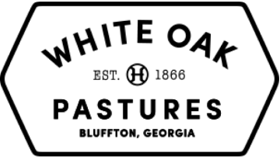When Will Harris III inherited White Oak Pastures, the farm totaled about 1,000 acres. As we transitioned toward regenerative agriculture, bit by bit, we started acquiring nearby farmland. Today, our farm owns or manages around 5,000 acres of pasture.
Much of the farmland that we’ve acquired was previously commodity row crop land that grew peanuts, corn, and cotton in a monoculture system. This soil is dry, dependent on fertilizer, and contains less than 1% organic matter. On windy days in South Georgia, you can see this kind of dirt blowing away in the wind, the land eroding right before your eyes.

A conventional farm neighboring White Oak Pastures. When the field is stripped bare after the monocrop is harvested, topsoil blows away across our pasture.
Industrial farming practices added chemical fertilizers and pesticides to this land while removing biodiversity and nutrients. There are no functioning natural cycles left on this land.
And yet, again and again, we have turned this kind of soil into perennial pasture, land that is teeming with life. How?
We restart the natural ecosystems through age-old methods that, to be clear, we did not invent: animal impact, rotational grazing, and holistic land management.
Here is what the regeneration of monocropped land actually looks like.
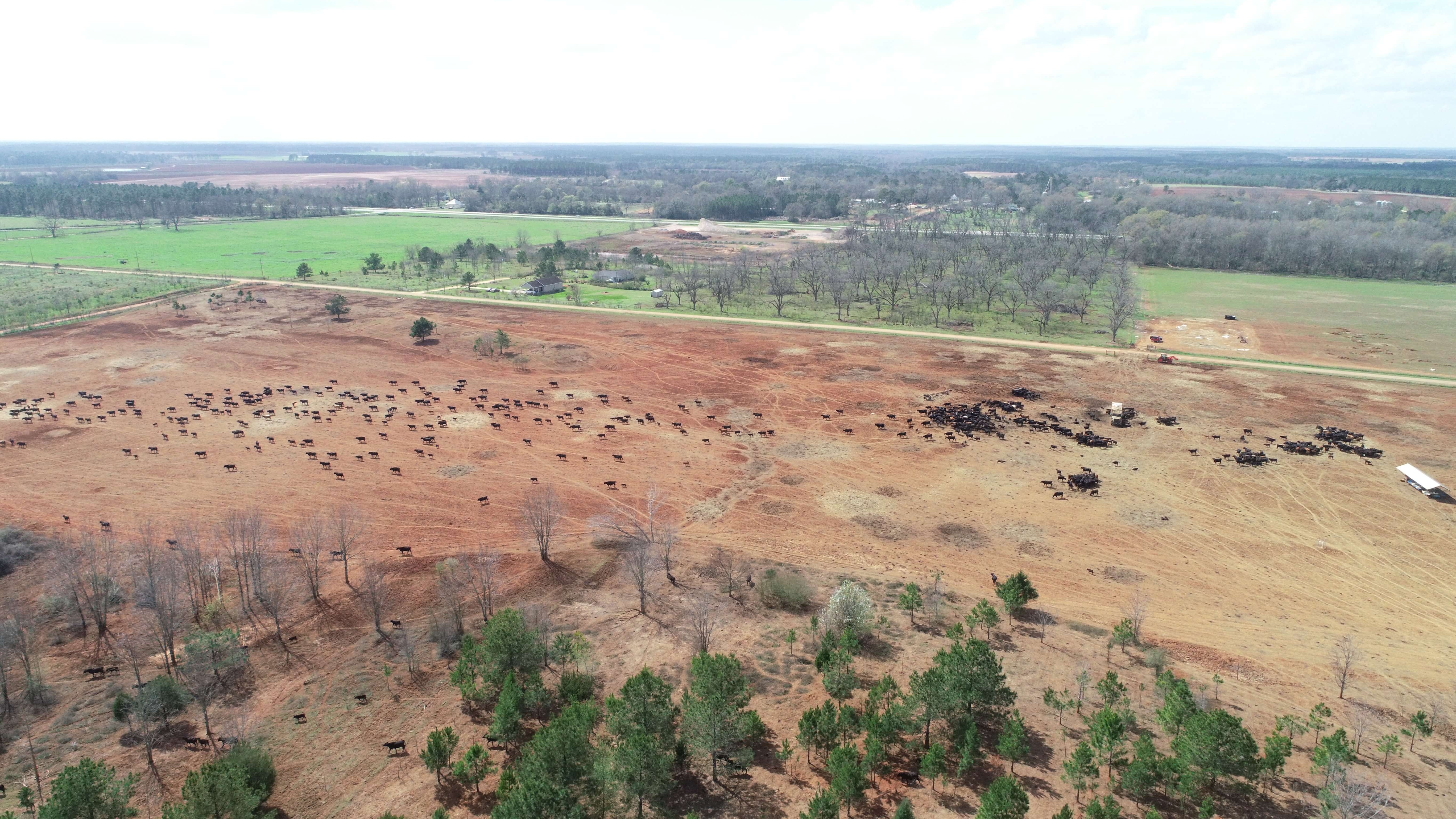
Our cattle on formerly monocropped land, recently acquired by White Oak Pastures. Notice the contrast with our pastures located across the road.
Rotational Grazing
We start with what we call "hay bombing". We'll leave a large herd of cows, calves, and bulls in a portion of the new land for a period of time. They forage what they can find on the land, and they are also fed upwards of 40 bales of hay each day.
Cattle are like walking fermentation tanks. These large ruminants eat and eat, and their urine and manure feed the soil. Their hooves knead leftover hay into the soil and begin to break apart the land.
By the time the cattle are done, the field is bare, brown, and ugly. But they've kickstarted natural cycles again. The ecosystem is primed for us to plant warm-season perennial grasses.
The perennial grass seeds sprout with the help of the new natural fertilizer, with plenty of space in aerated soil that needs new ground cover. Quicker-growing annuals (that some would call weeds) will also arrive, trying to outcompete the slow-growing perennials for light and real estate.
To help the perennial grasses, we bring in animal impact again with our rotational grazing crew. Each species on our farm grazes something that another will leave behind.
Cattle will come first, mowing down some of the fast-growing annuals. Our small ruminants will follow, with sheep biting plants lower than cattle. Hogs and goats are forest creatures, foraging the woods on the edges of the fields. Chickens and turkeys may be used as the cleanup crew, eating weeds that ruminants aren't interested in and pecking and scratching the soil to evenly spread the fertilizer left by the previous herd.
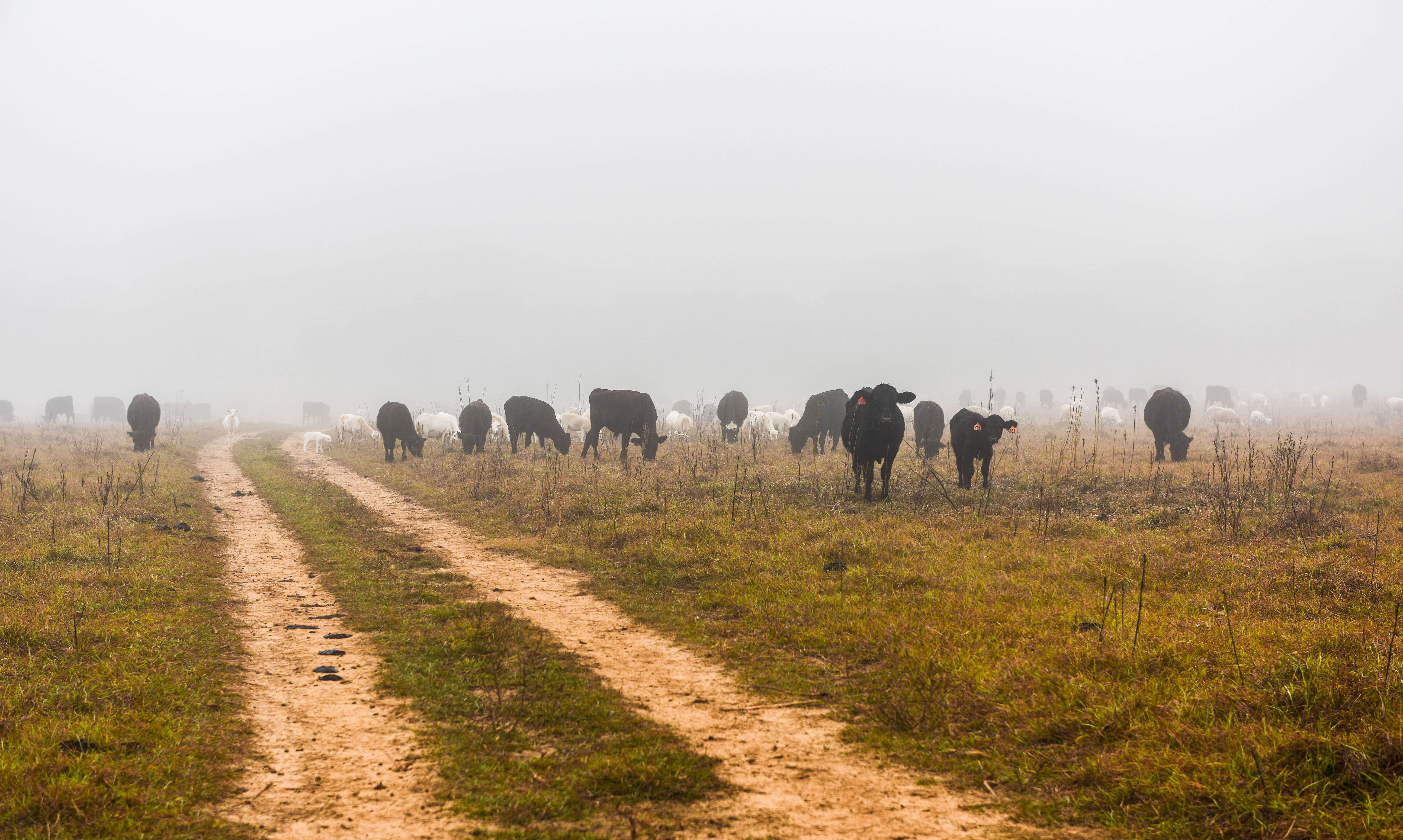
Land Transformation
The first year on this new land, there are small changes. Some perennial grasses take root, but there are also a number of annuals growing in the new environment. If you visit, you'll notice a huge number of flies attracted to the manure.
The next year, we'll repeat some version of this animal impact process. Perennial grasses are planted, annuals try to outcompete them, and we use our livestock to keep the annuals down. The proportion of perennial grasses increases again.
Every year, the pasture will change. There is a predictable succession of events. Ground cover increases, and perennials start to become more dominant than annuals. As the organic matter in the soil increases, water percolation in the land starts to improve, allowing perennials to thrive with their deep roots. Even the fly population will decline, as predator insects return to friendly perennial ecosystems.
Eventually, the land we acquired that was dusty topsoil starts to resemble the land that we've been farming regeneratively for 25 years.
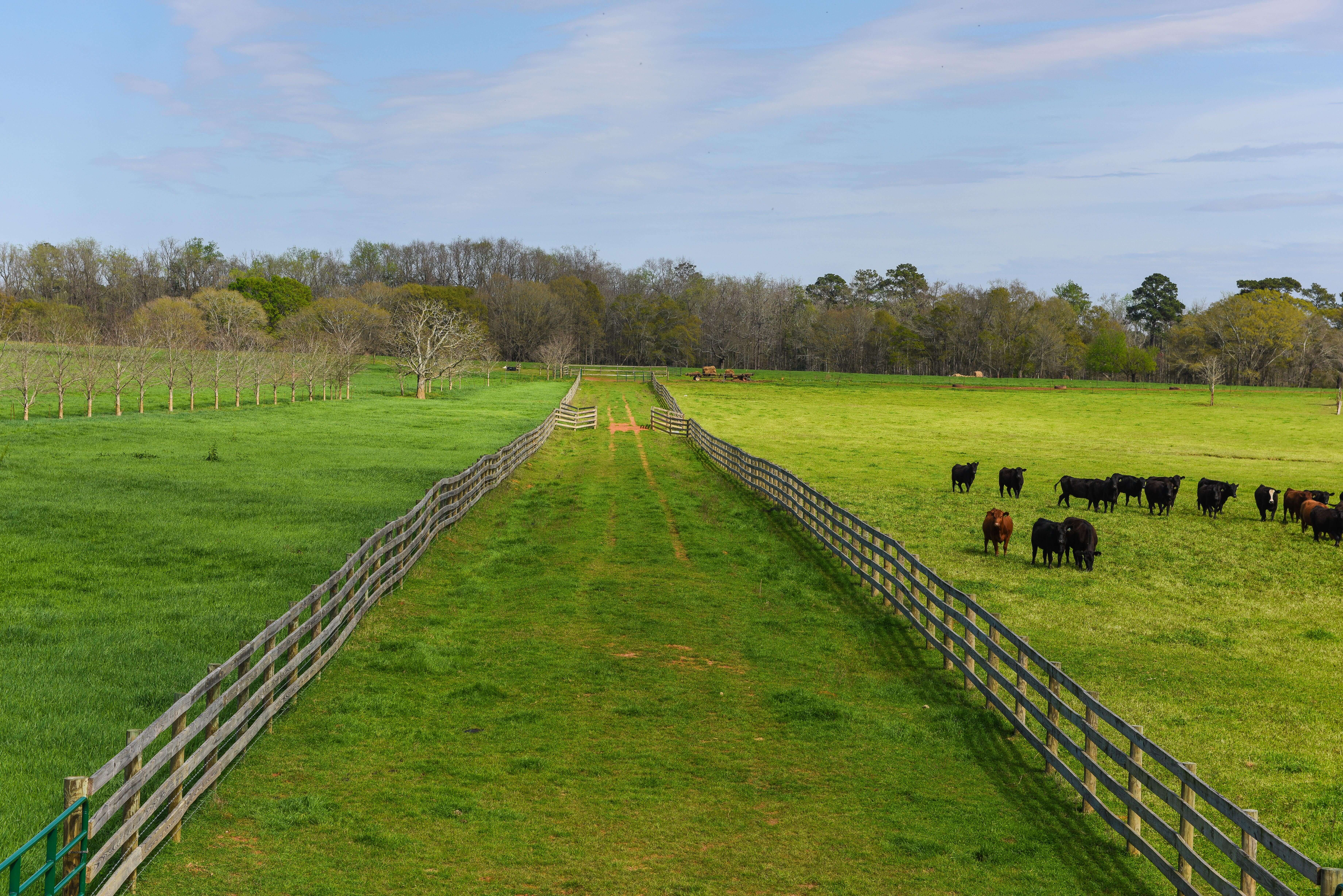
Why Animal Impact?
Our entire approach to regenerating land is based on biomimicry, emulating nature in land management. The "hay bombing" idea is based on the movement of predator and prey found in nature. Grazing animals have a heavy impact on land if they stay in one spot. Our cowboys play the role of predator, keeping grazing animals from staying stationary for too long. The pasture benefits from animal impact, and then the land gets a long rest and recovery.
Using animal impact on newly-acquired land that is not certified organic is one of the main reasons why we no longer pursue USDA Organic Certification for our meat, even though most of our pasture land is, in fact, organic.
As a farm, we produce grassfed, ethically-raised meat to sell to conscious consumers. However, our work goes beyond selling meat. In our model, regenerative, humane meat is the by-product of land regeneration.
In the words of Will Harris,
This meat is part of “the abundance of nature” that invariably results when all of the cycles of nature are operating properly. Monetizing it, by selling it to our customers, finances our effort to regenerate even more land.
Industrial monocultural farming methods are reductive. They destroy the otherwise perpetual cycles of nature. The land and the herd are meant to last forever.
Industrial food production is linear, and can only be practiced for a finite period of time. We American farmers have now been doing it for about 75 years.
We are near the end of that rope. Nature is cyclical, not linear. These linear factory farm practices fly in the face of the natural order. Mother Nature will bat last, and she will prevail.
Animals are the key to regenerating land that has been depleted by industrialized farming techniques. Animal impact is how we transform soil from less than 1% organic matter to 5% organic matter, sequestering carbon in the ground. This is why we view eating pasture-raised meat as a central tenet of climate change mitigation.
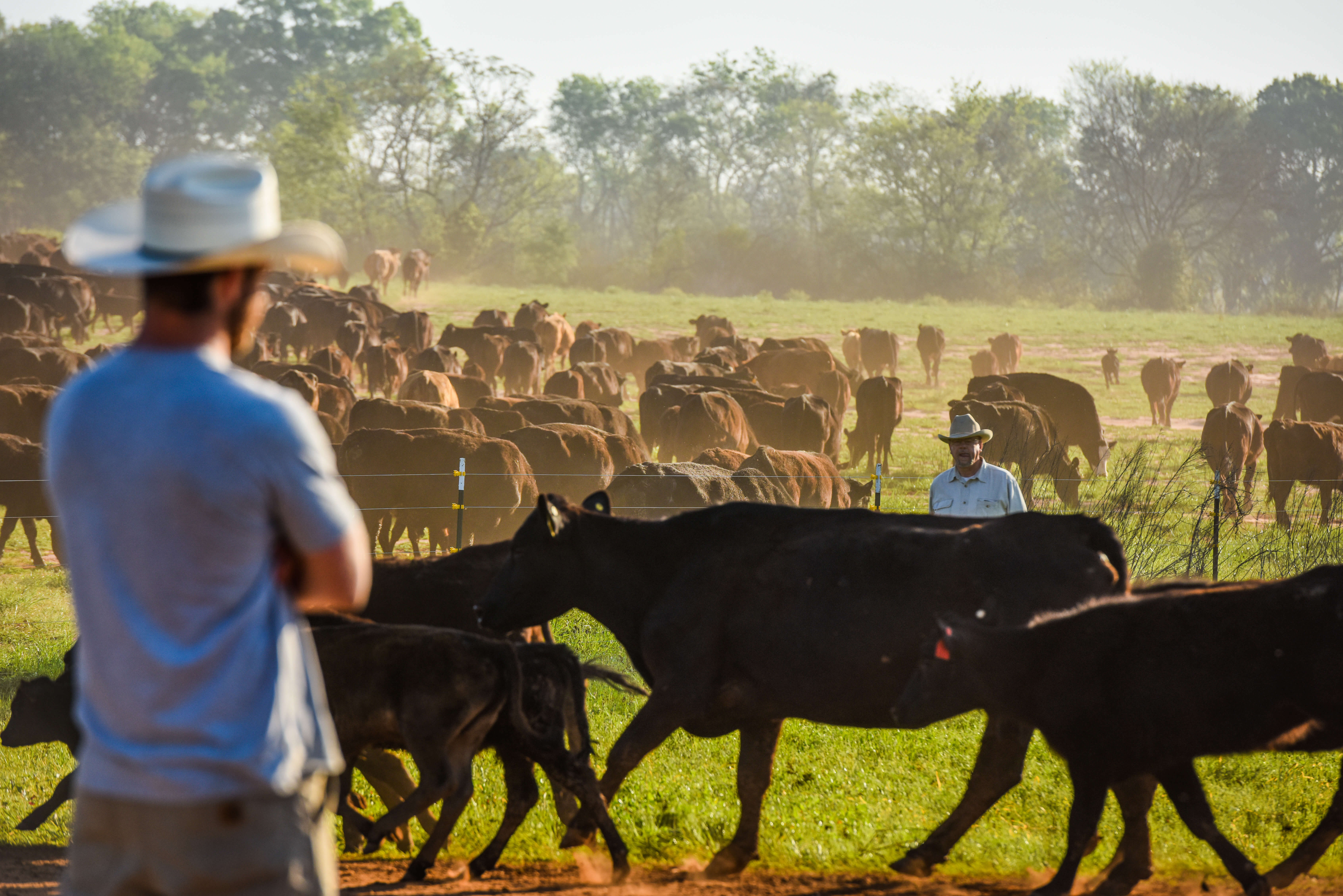
Our livestock are central to a system of regenerative, resilient, and responsible land management.
